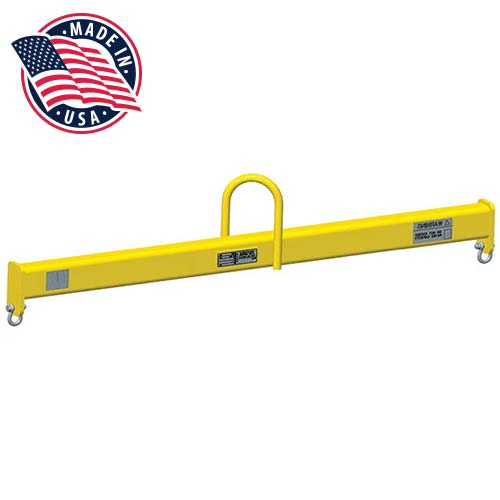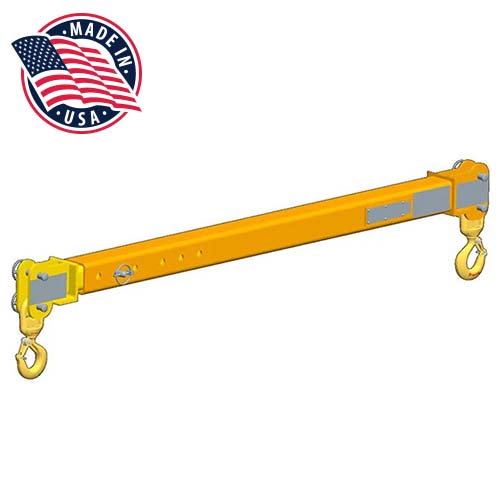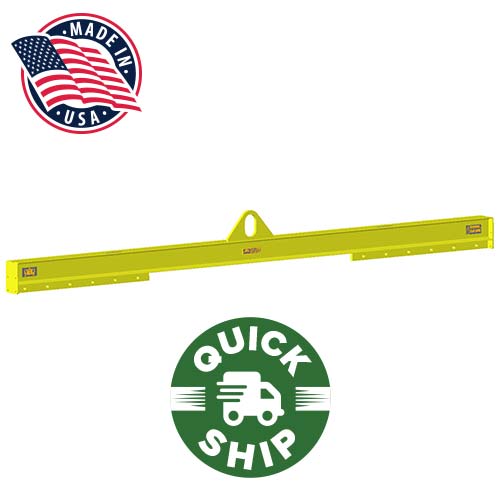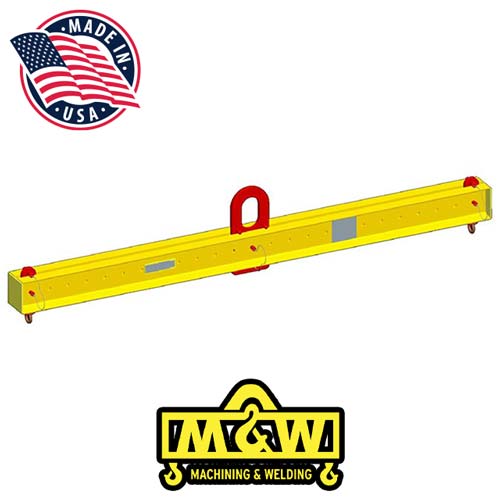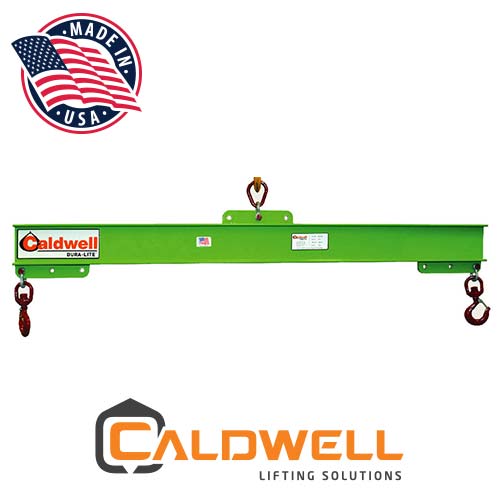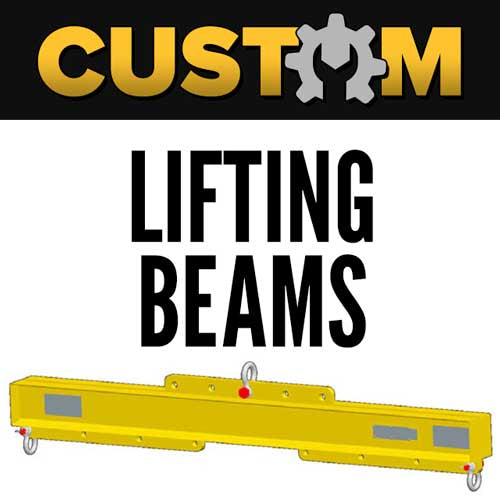Lifting Beams & Spreader Bars
Optimize Your Lifting with a Spreader Beam or Lifting Beam
When lifting heavy or oversized loads, the right equipment makes all the difference. Lifting beams and spreader beams / bars are below-the-hook lifting devices designed to improve load stability, reduce stress on lifting slings, and enhance safety during overhead lifts. From construction and manufacturing to shipping or warehouse logistics, hoist beams ensure efficient and secure material handling.
All of our lifting beams and spreader bars are made in the USA and manufactured to meet or exceed all ASME B30.20 regulations. They are proof loaded and shipped with certification paperwork, making jobsite safety compliance simple.
Do I Need a Lifting Beam or a Spreader Beam / Bar?
Many people use the term "spreader beam" interchangeably for all of the items in this category. However, when it comes to choosing the right hoisting beam for your application, knowing the differences between each type is essential.
Key Differences
- Load Distribution – A lifting beam supports a load with a central lifting point, while a spreader beam distributes weight evenly across multiple points.
- Headroom Considerations – Lifting beams require less vertical clearance than rigging spreader bars.
- Structural Integrity – A spreader beam uses compressive forces, whereas a lifting beam relies on bending forces.
The primary difference is the way they distribute the weight of the load during the lift. A lifting beam is under pressure at the single lifting point and therefore subject to shear and bending, while a spreader beam is designed to work under compression and spreads the load out evenly over a longer area.

Additionally, because there is just one lift point on a lifting beam and bending will occur during lifts, they are required to be larger and heavier than a spreader bar. However, the one point connection design means it works better in low headroom applications.
A lifting spreader beam is suspended from two lifting points, making them particularly useful for handling wide, delicate, or heavy loads. They are also well-suited for situations where the lift points are far apart.
Types of Hoisting Beams
- Fixed Lifting Beams - Designed for consistent lifting applications with a single load configuration.
- Adjustable Lifting Beams - Feature multiple lifting points for handling different load sizes.
- Specialty Lifting Beams - Created for use in more specialized tasks, such as container lifting or plate lifting.
- Fixed Spreader Beams - Rigid and pre-set for specific lifting tasks.
- Adjustable Spreader Beams - Allow length adjustments to accommodate different load sizes.
Custom Spreader Beams and Lifting Beams
If you don't see the right configuration for your application, get in touch with our team of product experts by calling or filling out our simple custom lifting beam online request form.
You'll sign off a schematic drawing from an engineer before production starts to ensure it's exactly what you need, and you'll receive proof testing certificates with the final hoisting beam.
Common Applications for Lifting Beams & Spreader Bars
Hoist beams are used in a wide variety of industries, including construction, manufacturing and warehousing, shipping and logistics, and rigging and cranes.
Hoist Beam FAQs
1. Can lifting beams and spreader bars be customized?
Yes! If you need a hoist beam designed to meet specific lifting requirements, fill out our online form to get started. We will get back to you within one business day, and will work with an engineer to make sure the final product is perfect for your job.
2. What are the safety requirements for using lifting beams?
Hoisting beams have two requirements to meet - ASME B30.20 and OSHA proof testing. All of our beams - both from M&W and Caldwell - exceed ASME B30.20 regulations and are shipped with proof testing certification.
3. How often should hoisting beams be inspected?
An inspection should be performed before every lift, with a more detailed inspection scheduled monthly or annually. Look for cracks, bending, or structural damage, and inspect the rigging hardware and attachment points for signs of wear or damage.
Lifting Slings and Rigging Supplies
We offer a full line of lifting slings, as well as rigging supplies and hardware to complete your lifting spreader beam setup. Be sure to check our How to Choose a Lifting Sling page for more information on the different types of lifting slings.
Questions?
Not sure what hoist beam you need for your job? Wondering which product is comparable to a specific Caldwell, Peerless, or other lifting beam? Give our product specialists a call. They'll be happy to go over our spreader beams and help determine which would work best for your application.



